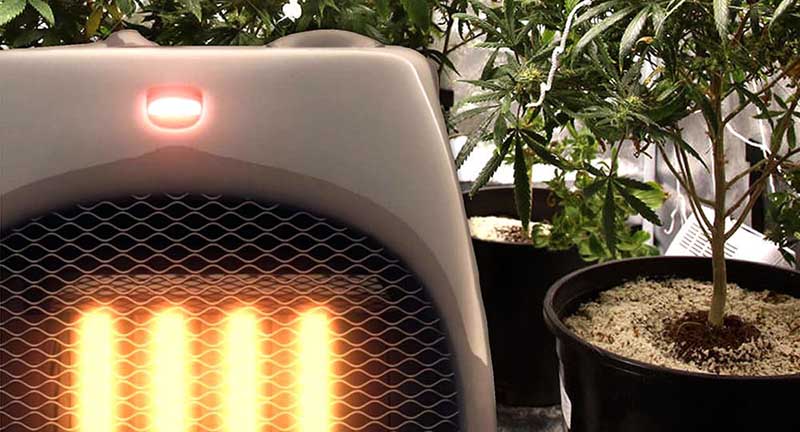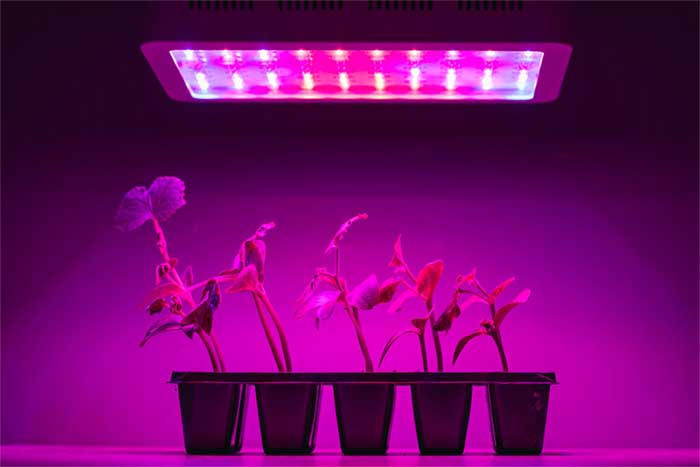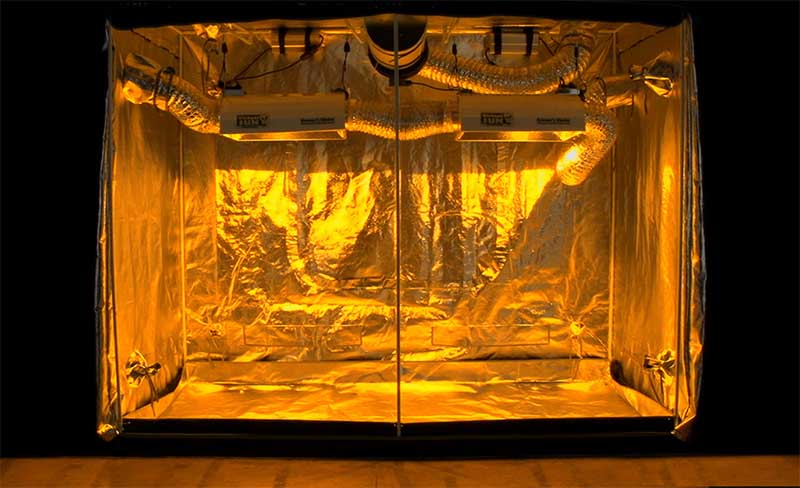Winter is a particularly challenging season for indoor gardeners. You must maintain an appropriate temperature within your grow tent for optimal plant growth. If your plants are too chilly, they may develop significant complications.
As a cultivator, you must know how to heat grow tent in winter. Standard methods include adjusting the ventilation and lighting, utilizing heaters and thermostats, insulating the grow tent, and maintaining the ideal temperature of the nutrient solution.
The optimal temperature range for your growing space when the lights are on is between 25-28°C. No gardener would like to lose their plants during flowering. Let us look at ways how to heat a grow tent.
How to Heat Grow Tent In Winter – 8 Tips For Keeping Your Grow Tent Warm In Winter.
Before starting on how to heat a grow tent in winter, you should consider a few things, e.g., the size of your grow tent, the type of plants growing, and the location of the grow tent. These considerations help you choose the best method for heating your grow tent.
Here are some steps to guarantee that your grow tent is warm when winter arrives.
1. Using Heaters To Warm Your Grow Tent
The majority of indoor growers prefer to install heaters. The installation of heaters is simple, making them a convenient option. However, numerous types of heaters exist, and it is up to the grower to pick which type is ideal for their grow tent.
The general rule is to purchase a powerful heater if you have ample growing space.

The commonly used heaters are;
Electric heaters
An electric heater is a great option to heat your grow tent during the cold winter. These heaters will heat the entire tent, dispersing heat evenly and emitting no moisture into the air.
Depending on the type of electric heater, you may only need to run it for a few minutes every hour to keep the tent warm. They have thermostats that automatically regulate the heater.
However, before purchasing a heater, a grower should check its wattage. A heater suitable to warm a 4×4 grow tent heater in winter should have a power output of 1500w to 2500w.
I do not recommend electric heaters for growing tents smaller than 4×4. Heaters are recommended for larger grow tents.
Oil-filled radiators
You can never go wrong when using an oil heater in grow tent. They use oil as a heat reservoir. They are plant friendly and do not blow hot air directly on your plants, which can sometimes make them dry.
Oil radiators also have a thermostat that automatically turns it on once the lights go out and ensure a warm temperature even when lights are off.
However, oil radiators require more maintenance than electric heaters.
Fan heaters
Fan heaters function similarly to electric heaters. However, when the dry, hot air is directed directly at plants, it can lower humidity, damage the plants, and hinder their growth.
Ensure that it is not aimed directly at the plants if it must be placed in the grow space, or consider replacing it with an oil-filled radiator.
Ceramic heaters
They function similarly to fan heaters. This heater is different from the rest because it uses ceramic to generate heat. Ceramic heaters are great for use with small grow tents. This makes them suitable for heating a 3×3 grow tent in winter, a reasonably small grow tent.
Tube heaters
Tube Heaters are small enough to be positioned at any level within your grow tent. They emit a regular heat flow into the surrounding air, maintaining a constant temperature.
They have a low operating cost but do not have a thermostat.
Hydronic heaters
They generate heat by heating water which circulates the grow tent through pipes and warms it up. Hydronic heaters also create humidity which plants require. They are also called aquarium heaters.
2. Insulating Your Grow Tent During Winter
Insulation creates a barrier between the inside and outside of the grow tent, thus keeping the heat inside the grow tent.
It is vital to close off all holes and gaps in the grow tent during winter to prevent cold air from seeping in. Some growers wrap up the whole grow tent with blankets or building insulation, water heater insulation, or spray foam.
Spray foam is expensive but highly efficient as it seeps into every crevice and seals it. Closed spray foam is ideal for both temperature and humidity control.
3. Use The Correct Lighting For The Winter Period

The most commonly used lights in grow houses are HID or LED lights. The critical point is that when using the HID lights, you do not need to use a heater because they provide light and emit heat.
LED lights are primarily a light source, so I do not recommend them during winter. However, HID lights emit a lot of heat and are the best option during the cold season.
Depending on the size of your room, you can add more lights to ensure more heat circulates in the room.
4. Change The Lights On/Lights Off, Period
A grower can switch the lighting period to be on at night and off during the day. This will help keep the plants warm during the night when temperatures are low.
I also suggest increasing your lighting period from 18-24 hours. However, you should have a thermostat that detects when the temperatures get too high and therefore kicks in to switch off the lights.
5. Using An Indoor Ventilation Room
Instead of your intake fan getting air from the outside environment, direct it to a room inside your house, e.g., your attic or garage. This room is called a lung room.
The air getting into the tent will therefore be less chilly than the air outside. If you do not want to use lights throughout, this is one of the simplest ways how to keep grow room warm when lights are off.
For fresh air intake, keep your extraction fan directed to the open so that air is extracted to the outside. And open a window in your lung room to let in the fresh air.
Related: Best oscillating fans for grow tent
6. Slowing Down Your Exhaust/Intake Fans
Slowing down your fans means that warm air will remain in your tent longer, but the fresh air will also be circulating. I use a fan speed controller to control the fans’ speed and cool down the HID lights by attaching them to the duct fan.
However, I suggest using this tip only if your plants are in a vegetative state. If they are in full bloom, I suggest not tampering with the fans’ speed to ensure high yields.
7. Do Not Place Your Grow Tent Directly On The Floor
For example, a grow tent in a garage in winter is likely to be very cold because the grower places the grow tent directly on the garage’s floor. The most cost-effective method is setting the grow tent on a carpet or old rugs.
If you have growing pots, place them on a raised makeshift, e.g., a saucer or a tray, instead of putting them directly on the floor. This keeps the plants’ roots further away from the cold floor.
You can also utilize germinating mats and insulated mats under the pots to keep the roots warm.
How To Heat Indoor Grow Tent In Winter
I suggest keeping the grow room’s temperature above 20°C. Adding insulation to the sides of the grow room, use a heater or additional lights or any of the methods I have discussed above.
However, when choosing a method of how to heat an indoor grow tent in winter, consider the size of the grow room and the requirements of your plants.
FAQs
How Do I Keep My Grow Room Warm At Night?
Use heaters, switch your lighting period to ensure that the lights on period are during the night, and slow your extract/intake fans.
How Do I Know If My Plants Are Too Cold?
The main signs that show your plants are too cold are; if the germination rate is low, the plants’ stems turning purple, the presence of mold on the plants, rotting limbs and roots, and limp or curled-up leaves.
Do Grow Tents Hold Heat?
Yes, they do. You can install heaters and lights that generate heat to warm up your grow tent. However, ensure an effective ventilation system to provide fresh air intake.
Conclusion
The takeaway points are to remember to take in air from another room, not from outside. Keep nutrients at the proper temperature. We are reducing the amount of air intake and extraction by using fan speed controllers.
Insulate your grow room’s walls, floor, and ceiling, use heaters as an additional heat source, and change your lights out and on periods.
For heaters, choose the best suited for your grow tent’s size. I hope you are now conversant with how to heat grow a tent in winter.

